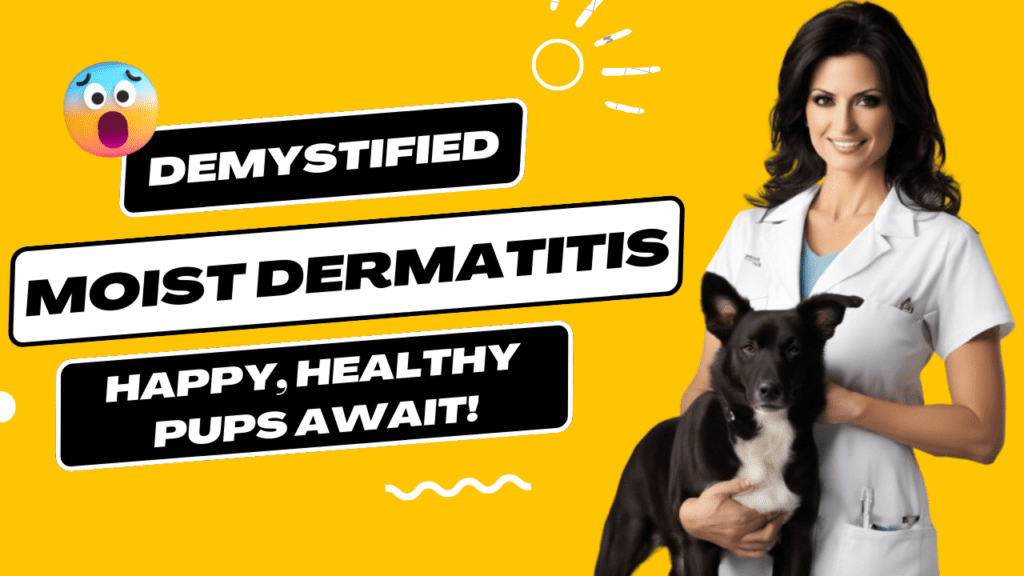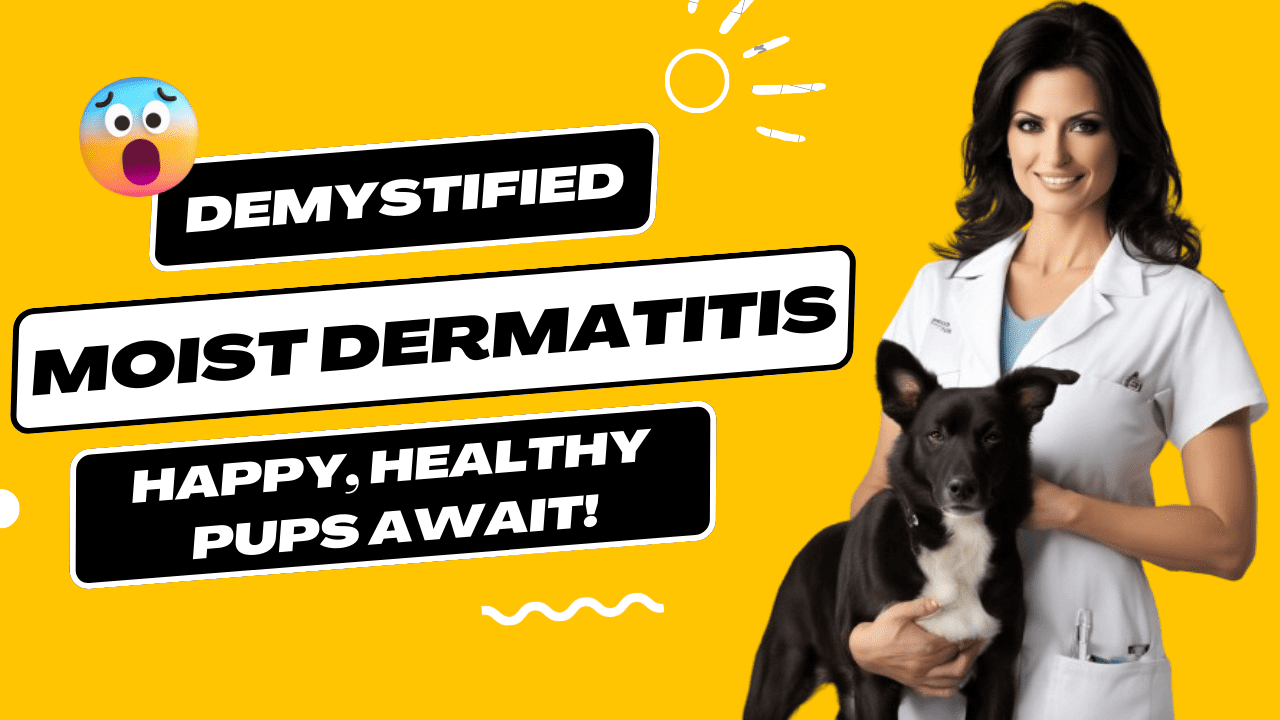Moist dermatitis, commonly known as hot spots, is a skin condition that can affect dogs of all breeds and ages. These irritated, red, and sometimes oozing sores can be uncomfortable for your furry friend and may lead to further complications if not addressed promptly. In this blog post, we will delve into the causes, symptoms, and effective treatment options for moist dermatitis in dogs.
What is Moist Dermatitis?
Moist dermatitis is a superficial skin infection that often occurs when a dog’s skin becomes irritated, leading to excessive scratching, licking, or chewing. This constant moisture on the skin creates an ideal environment for bacteria to thrive, resulting in the development of hot spots. These hot spots can appear suddenly and spread rapidly if not treated.

Causes of Moist Dermatitis:
- Allergies: Dogs can develop hot spots as a result of allergies to food, pollen, or certain materials.
- Parasites: Fleas, ticks, and mites can irritate a dog’s skin, prompting them to scratch excessively and create hot spots.
- Poor Grooming: Dogs with thick or long coats are more prone to hot spots if their fur becomes tangled or matted, trapping moisture against the skin.
- Bacterial Infections: Any break in the skin, such as a cut or scratch, can become infected with bacteria, leading to moist dermatitis.
Symptoms of Moist Dermatitis:
- Red, inflamed skin
- Oozing sores or blisters
- Hair loss in the affected area
- Foul odor
- Excessive licking, biting, or scratching
Treatment Options:
- Clean the Affected Area: Gently clean the hot spot with a mild antiseptic solution or a vet-recommended cleanser. Avoid using alcohol-based products, as they may cause additional irritation.
- Trim Surrounding Hair: Trim the hair around the hot spot to allow air to reach the affected area, promoting faster healing.
- Topical Treatments: Apply prescribed or over-the-counter topical treatments, such as medicated creams or sprays, to aid in healing and prevent infection.
- Address Underlying Causes: Identify and address the underlying cause of the hot spot, whether it be allergies, parasites, or poor grooming practices.
- E-Collars: Consider using an Elizabethan collar (E-collar) to prevent your dog from further licking or biting the affected area.
When to Consult a Veterinarian:
While mild cases of moist dermatitis can often be treated at home, it’s crucial to consult your veterinarian if:
- The hot spot is large or spreading rapidly.
- Your dog is in significant discomfort or pain.
- Signs of infection (pus, worsening redness) are present.
- The hot spot doesn’t improve with at-home treatments.
Prevention Tips:
- Routine grooming helps prevent fur matting and tangling.
- Use flea and tick prevention methods.
- Address any underlying allergies with your veterinarian’s guidance.
In conclusion, moist dermatitis in dogs can be a bothersome condition, but with prompt attention and proper care, you can help your canine companion heal quickly and prevent future occurrences. Always consult your veterinarian for personalized advice and treatment options tailored to your dog’s specific needs.
Read More: https://drcmpetclinic.com/2023/12/29/why-do-cats-scream-during-mating/

